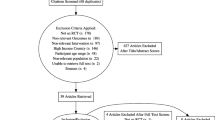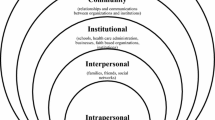Abstract
Traditional cultural practices and sexual rituals have an important role in the life and structure of tribal groups within Kenya. These cultural practices and rituals also play a significant role in the spread of HIV. The purpose of this descriptive qualitative study was to document the underlying social and cultural significance of the sexual cleansing ritual and to assess its impact on HIV prevention strategies. The study participants were selected by purposive and snowball sampling. Data were collected using in-depth interviews, focus group discussions and observations; they were analyzed using content analysis. The article gives detailed explanations of the meanings and symbols of the ritual in its cultural context as a ritual of social transition. Sexual intercourse is perceived as a sacred rite when performed as a ritual. It is associated with most social cultural activities like planting, harvesting, weddings and burial ceremonies. The underlying intention of this ritual is to cleanse evil spirits and to sanctify. Widows who are not cleansed are ostracized and discriminated. The continued practice of the ritual is perpetuated by a shared common belief system that affects social interactions of the community members. Widows and cleansers are believed to be purveyors of the HIV virus. The ritual encourages unprotected sex with multiple partners. These are barriers to HIV prevention strategies that are aimed at changing sexual behaviors.


Similar content being viewed by others
References
Akwara, P. A., Madise, J. N., & Hinde, A. (2003). Perception of risk of HIV/AIDS and sexual behavior in Kenya. Journal of Biosocial Science, 35, 385–411.
Burkhalter, H. J. (2002). The violent transmission of HIV/AIDS (p. 2). CSIS HIV/AIDS task Force, Africa program.
Central Bureau of Statistics (2003). Kenya Demographic Health Survey Report.
Central Bureau of Statistics (CBS), National Council for Population and Development (NCPD), Ministry of Planning and Development [Kenya], and Macro International Inc. (MI) (1999).
Chikovore, J. M. (1999). Beliefs about sexual relationships and behaviours among commercial farm residents in Zimbabwe. Central African Journal of Medicine, 45(7), 178–182.
Denizen, N. K. (1970). Qualitative data analysis and evaluation, p. 15.
Gausset, Q. (2001). AIDS and cultural practices in Africa: The case study of the Tonga (Zambia). Social Science and Medicine, 52(4), 509–518.
Government of Kenya. Ministry of Health (2001). AIDS in Kenya: Background, projections, impact, interventions and policy (6th ed.). Nairobi: National AIDS and STD Control.
Harmful tradition. In Aids: The agony of Africa – Part five: Death and the second sex (p. 5), http://www.thebody.com/schoofs/Africa.5html
Helman, G. C. (1994). Culture health and illness (3rd ed.). Boston: Butterworth-Heinmann.
Helman, G. C. (1996). Culture health and illness (3rd ed.). Boston: Butterworth-Heinmann.
Hrdy, D. B. (1987). Cultural practices contributing to the transmission of HIV in Africa (abstract). Review of Infectious Diseases, 9(6), 1109–1119.
Keenan, J. (Ed.). Catholic Ethicists on HIV/AIDS Prevention, New York and London, pp. 346–624 http://www.catholicdoctors.org.uk/CMQ/Feb_2001/book_reviews.htm 25/10/2004.
Leach, E. R. (1966). Ritualization in man in relation to conceptual and social development. Philosophical Transactions of the Royal Society of London. Series B, Biological Sciences, Vol. 251, No. 772, A Discussion on Ritualization of Behaviour in Animals and Man (Dec. 29, 1966), pp. 403–408.
Loosli, C. (2004). Traditional practices and HIV prevention in Sub-Saharan Africa.
Machel, J. (2001). Unsafe sexual behavior among school girls in Mozambique: A matter of gender and class. Reproductive Health Matters, 9, 48–56.
Malungo, J. R. S. (2001). Sextual cleansing (Kusalazya) and levirate marriage (Kunjilila mung’anda) in the era of AIDS: Changes in perceptions and practices in Zambia. Social Science & Medicine, 53, 371–382.
Ministry of Health, Government of Kenya (2005). AIDS in Kenya. NASCOP.
Mutemi, R., Mbori-Ngacha, D. A., K’Oyugi, B. O., & Aoko, M. I. (1998). Social-cultural determinations of sexual behaviour; a case study of Mwingi and Homabay, Kenya. International conference AIDS; 12: 224.
Nduati, R., & Wambui, K. (1996). Communicating with adolescents on HIV/AIDS in East and Southern Africa. Nairobi: Regal Press Kenya Ltd.
Nkunika, M., Kalipenta, J. B., & Nyirenda, W., et al. (1998). The cultural dimension as a determinant of behavior among the Tonga of southern province – Zambia. (Abstract). International conference AIDS, 12, 231–232.
Nzioka, C. (1994). The social construction and management of HIV and AIDS among low income patients in Nairobi, Kenya. Unpublished PhD Thesis, University of London.
Olayinka, B. A., Alexander, L., Mbizvo, M. T., & Gibney, L. (2000). Generational differences in male sexuality that may affect Zimbabwean women’s risk for sexually transmitted diseases and HIV/AIDS. East Africa Medical Journal, 77(2), 93–97.
Patton, M. Q. (1990). Qualitative evaluation and research methods, (2nd ed.). p. 104.
Pisani, E. (1999). AIDS into the 21st century: Some critical considerations. SAFAIDS News, 7(4), 2–10.
Seckinelgin, H. (2002). “Time to stop and think: HIV/AIDS, Global Civil Society, and People's Politics” Global Civil Society Year Book 2002. Oxford: OUP.
Traditional practices that increase HIV/AIDS risks to women and girls in human rights watch, Lusaka, May 20, 2002.
UNICEF/UNESCO Research Report (1999). A cultural approach to HIV prevention and care. South Africa Experience.
UNSCO/UNAIDS (1999). A cultural approach to HIV prevention and care.
UNAIDS (2004). Report on the global AIDS epidemic.
UNAIDS best Practice collection (1999). Sexual behavior change for HIV: Where have theories taken us? Geneva, p. 7.
Vann Gennep (1909). Les rites de passage (The Rites of Passage) which includes his vision of rites of passage rituals as being divided into three phases: preliminary, liminaire, postliminaire.
Wife Inheritance Spurs AIDS Rise in Kenya, African Lives, p. 2, http://www.washingtonpost.com/wpsrv/inatl/longterm/africanlives/kenya_faids 14/10/2004
Author information
Authors and Affiliations
Corresponding author
Rights and permissions
About this article
Cite this article
Ayikukwei, R.M., Ngare, D., Sidle, J.E. et al. Social and Cultural Significance of the Sexual Cleansing Ritual and its Impact on HIV Prevention Strategies in Western Kenya. Sex Cult 11, 32–50 (2007). https://doi.org/10.1007/s12119-007-9010-x
Published:
Issue Date:
DOI: https://doi.org/10.1007/s12119-007-9010-x




